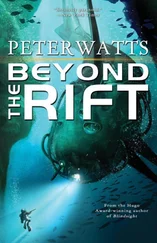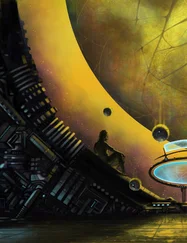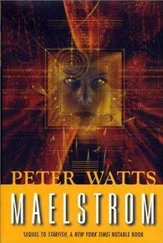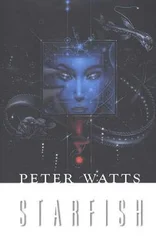55. Lucas, P.W., and P.F. Roche. 2000. A population of very young brown dwarfs and free-floating planets in Orion. „Monthly Notices of the Royal Astronomical Society” nr 314, s. 858-864.
56. Najita, J.R., G.P. Tiede, and J.S. Carr. 2000. From stars to superplanets: The low-mass initial mass function in the young cluster IC 348. „Astrophysical Journal” nr 541 (1.10.2000), s. 977-1003.
57. Matthews, Jaymie. 2005. Korespondencja prywatna.
58. Liu, W., and Schultz, D.R. 1999. Jovian x-ray aurora and energetic oxygen ion precipitation. „Astrophysical Journal” nr 526, s. 538-543.
59. Chen, P.V. 2001. Magnetic field on Jupiter. „The Physics Factbook”, http://hypertextbook.com/facts/
60. Osorio, M.R.Z. et al. 2000. Discovery of Young, Isolated Planetary Mass Objects in the σ Orionis Star Cluster. „Science” nr 290, s. 103-106.
61. Lemley, B. 2002. Nuclear Planet. „Discover” nr 23(8).
62. http://www.nuclearplanet.com/
63. Dulk, G.A., et al. 1997. Search for Cyclotron-maser Radio Emission from Extrasolar Planets. Abstracts of the 29th Annual Meeting of the Division for Planetary Sciences of the American Astronomical Society, 28.07-1.08.1997, Cambridge, Massachusetts.
64. Marley, M. et al. 1997. Model Visible and Near-infrared Spectra of Extrasolar Giant Planets. Abstracts of the 29th Annual Meeting of the Division for Planetary Sciences of the American Astronomical Society, 28.07-1.08.1997, Cambridge, Massachusetts.
65. Boss, A. 2001. Formation of Planetary-Mass Objects by Protostellar Collapse and Fragmentation. „Astrophys. Journal” nr 551, s. L167.
66. Low, C, and D. Lynden-Bell. 1976. The minimum Jeans mass or when fragmentation must stop. „Mon. Not. R. Astron. Soc.” nr 176, s. 367.
67. Jayawardhana, R. 2004. Unraveling Brown Dwarf Origins. „Science” nr 303, s. 322-323
68. Fegley, B., and K. Lodders. 1996. Atmospheric Chemistry of the Brown Dwarf Gliese 229B: Thermochemical Equilibrium Predictions. „Astrophys. Journal” nr 472, s. L37.
69. Lodders, K. 2004. Brown Dwarf-Faint at Heart, Rich in Chemistry. „Science” nr 303, s. 323-324
70. Adam Burgasser. 2002. „Astrophysics Journal Letters” z 1.06.2002.
71. Reid, I.N. 2002. Failed stars or overachieving planets? „Science” nr 296, s. 2154-2155.
72. Gizis, J.E. 2001. Brown dwarfs (enhanced review). Artykuł w sieci, uzupełniający „Science” nr 294, s. 801.
73. Clarke, S. 2003. Milky Way’s nearest neighbor revealed. NewScientist.com z 04/11/03.
74. Basri, G. 2000. Observations of brown dwarfs. „Annu. Rev. Astron. Astrophys” nr 38, s. 485-519.
75. Tamura, M. et al. 1998. Isolated and Companion Young Brown Dwarfs in the Taurus and Chamaeleon Molecular Clouds. „Science” nr 282, s. 1095-1097.
76. Berger, E. 2001. Discovery of radio emission from the brown dwarf LP944-20. „Nature” nr 410, s. 338-340.
77. Anonymous, 2000. A brown dwarf solar flare. „Science@Nasa”, http://science.nasa.gov/headlines/y2000/astl2jul_1m.htm
78. Schilling, G. 2001. Comet’s course hints at mystery planet. „Science” nr 292, s. 33.
79. Evelyne Kohler, E. et al. 2002. Hearing Sounds, Understanding Actions: Action Representation in Mirror Neurons. „Science” nr 297, s. 846-848
80. Rizzolatti, G, and Arbib, M.A. 1998. Language Within Our Grasp. „Trends in Neuroscience” nr 21(5), s. 188-194.
81. Hauser, M.D., N. Chomsky, and W.T. Fitch. 2002. The faculty of language: what is it, who has it, and how did it evolve? „Science” nr 298, s. 1569-1579.
82. Miller, G. 2005. Reflecting on Another’s Mind. „Science” nr 308, s. 945-947
83. Pfeiffer, T., S. Schuster, and S. Bonhoeffer. 2001. Cooperation and Competition in the Evolution of ATP-Producing Pathways. „Science” nr 20 292, s. 504-507.
84. McMahon, R.J. 2003. Chemical Reactions Involving Quantum Tunneling. „Science” nr 299, s. 833-834.
85. Zuev, P.S. et al. 2003. Carbon Tunneling from a Single Quantum State „Science” nr 299, s. 867-870
86. Darwin, Charlie (hehehehe). 1859. O powstawaniu gatunków drogą doboru naturalnego. Penguin Classics Edition, reprint z 1968. I wyd.: John Murray, London.
87. Cho, A. 2004. Life’s Patterns: No Need to Spell It Out? „Science” nr 303, s. 782-783.
88. Cohen, J., and Stewart, S. 2005. Where are the dolphins? „Nature” nr 409, s. 1119-1122.
89. Reilly, J.J. 1995. After Darwin. „First Things”, 06/07.1995. Dostępny także pod: http://pages.prodigy.net/aesir/darwin.htm.
90. Devlin, K. 2004. Cracking the da Vinci Code. „Discover” nr 25(6), s. 64-69.
91. Snir, Y, and Kamien, R.D. 2005. Entropically Driven Helix Formation. „Science” nr 307, s. 1067.
92. Wolfram, S. 2002. A New Kind of Science. Wolfram Media.
93. Albert, M.L. 2004. Danger in Wonderland. „Science” nr 303, s. 1141
94. Muotri, A.R., et al. 2005. Somatic mosaicism in neuronal precursor cells mediated by L1 retrotransposition. „Nature” nr 435, s. 903-910.
95. Nelson, D.L., and M.M Cox. 200. Lehninger principles of biochemistry. Worth, NY, NY.
96. Prigonine, I., and G. Nicholis. 1989. Exploring Complexity. Freeman, NY.
97. Dawkins, R. 1988. The Blind Watchmaker: Why the Evidence of Evolution Reveals a Universe Without Design. Norton.
98. Pinker, S. 1997. How the Mind Works. WW Norton & Co., NY.
99. Koch, C. 2004. The Quest for Consciousness: A Neurobiological Approach. Roberts, Englewood, CO.
100. McFadden, J. 2002. Synchronous firing and its influence on the brain’s electromagnetic field: evidence for an electromagnetic field theory of consciousness. „J. Consciousness Studies” nr 9(4), 2002
101. Penrose, R. 1989. The Emporer’s New Mind. Oxford University Press.
102. Tononi, G., and G.M. Edelman. 1998. Consciousness and Complexity. „Science” nr 282, s. 1846-1851.
103. Baars, B.J. 1988. A Cognitive Theory of Consciousness. Cambridge Univ. Press, New York.
104. Hilgetag, C.C. 2004. Learning from switched-off brains. „Scientific American.” nr 14, s. 8-9.
105. Roth, G. 2004. The quest to find consciousness. „Scientific American.” nr 14, s. 32-39.
106. Pauen, M. 2004. Does free will arise freely? „Scientific American” nr 14, s. 41-47.
107. Zimmer, C. 2003. How the mind reads other minds. „Science” nr 300, s. 1079-1080.
108. Crick, F.H.C., and C. Koch. 2000. The unconscious homunculus. W: Neural Correlates of Consciousness-Empirical and Conceptual Questions (red. T. Metzinger) MIT Press, Cambridge.
109. Churchland, P.S. 2002. Self-Representation in Nervous Systems. „Science” nr 296, s. 308-310.
110. Miller, G. 2005. What is the biological basis of consciousness? „Science” nr 309, s. 79.
111. Blakeslee, S. 2003. The Christmas tree in your brain. „Toronto Star”, 21/12/03
112. Matsumoto, K., and K. Tanaka. 2004. Conflict and Cognitive Control. „Science” nr 303, s. 969-970.
113. Kerns, J.G., et al. 2004. Anterior Cingulate Conflict Monitoring and Adjustments in Control. „Science” nr 303, s. 1023-1026.
114. Petersen, S.E. et al. 1998. The effects of practice on the functional anatomy of task performance. „Proceedings of the National Academy of Sciences” nr 95, s. 853-860.
Читать дальше








